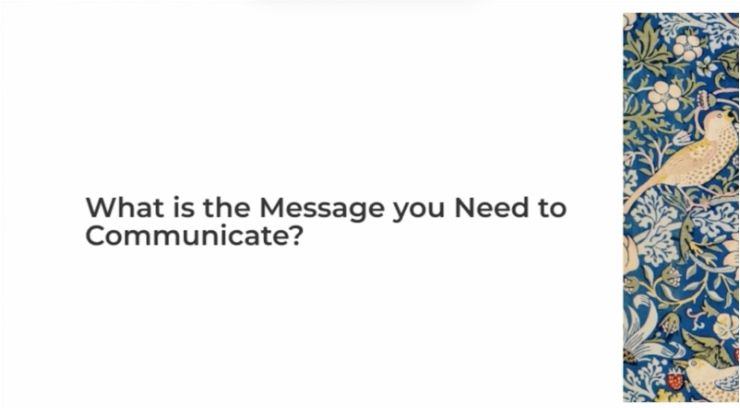Aligning Teams on Change

During COVID I was leading a team through many upheavals: layoffs, structural changes in the organization, and our objectives for an uncertain future. When sharing updates I just kind of went out there to make sure that people knew what I was going to say, and that people knew about the change, so I could check the box. But because I tried to cram all these differing objectives into one conversation the result was that my team left the room with more questions than before.
Where did I go wrong?
I had just taken over a new function and I was just getting to know people on the team. I didn’t consider the people that I was speaking to so I had no idea how my messaging would land. The team was in a very vulnerable state with a lot of unknowns. They didn't need someone at that time to come up and just say things to them. They really wanted someone to see and understand them.
I would have done better to hold off on sharing the message until I myself felt confident and comfortable with what I was delivering. And I could have taken a moment to get to know the people on the team so that I knew how they might perceive some of the changes I was communicating.
So don't be like me. You can follow these tips to ensure that you are more effective when communicating change to your teams.
Establish the objectives of your communication
With any communication, you want to make sure that you know exactly why you're saying what you're saying. You need to establish your objectives. This sounds like a no-brainer, but I cannot tell you how many times I went to tell a team a thing without taking a step. I got in front of the team and started to ramble so much that I confused myself. When questions came up I didn't know how to answer them. When it came to wrapping up, I had no idea how to bring it in and my ending was awkward.
I realized that the goal was not only to share information, after all that's easy enough to do. The goal is for the team to walk away knowing what we want to accomplish. So instead of sharing information you need to share the outcomes that you are trying to accomplish.
I like to think of how the organization will operate once the change is made. What will employees or teams experience as a result of making this necessary transition? Will there be tangible results? What do those results look like? Will there be a sense of accomplishment? What will that feel like? What will the rewards be, both for individuals and the organization as a whole? Making these answers a part of your conversation is going to be central to how you communicate your change.

Develop a set of questions and light bullets to help you form your thoughts on the outcomes you need, and the key messages you want to deliver so teams have a clear understanding of what the change is and how to impact their work. Break out the who, what, where, when, why, and how of your message to make sure that you are anticipating what people may be wondering.
You want your teams to be aligned and heading in the same direction so you have less ambiguity in what's being done.
Consider your audience
In our remit, people are highly educated and they are intuitively put off by any sugarcoating as it seems disingenuous. You can still be kind and supportive while being open and honest. You'll gain trust when you use simple, straightforward language and people will be more likely to feel like you're being upfront about what is changing and why it needs to change.
You never want to talk down to your employees as this makes people feel resentful and undervalued.
And everyone may not like the change. You need to acknowledge that too. But there's generally an upside. If there's no upside, then you should say that. You need to admit that what's happening sucks and that you will do as much as possible to make sure that the change goes as smoothly as possible.
To ensure that your audience receives your message you need to factor in the following considerations.

Communication order. You'll need to consider the order that you'll need to share your points.
Designing feedback time. When you're speaking to the team, will you have time at the end for questions or will you let folks pop in with questions?
Communicators. Will you have anyone else with you or will you do it solo?
Timing. Do you have a reoccurring team meeting where you'll easily just address everyone at? Do you need to schedule a dedicated moment? If you schedule a dedicated moment, does that cause panic in the team? Do you need to think about how to approach that in a meaningful way? Is there a time of day or week that works better for your team or you to speak to? Is there a deadline for the communication?
Channel. When you think about the channel, is it a public Slack message? Is it a video announcement? Is it a meeting so the communication is interactive?
Format. If your employees respond well to graphics, use them. If people prefer roadmaps you can use a step-by-step. Don't assume that by just saying that thing, people will get it.
Ensure the management team is aligned before opening up communication
Your managers have their fingers on the pulse of the general sentiments in the team. They know how people are likely to respond and will be able to point out any potential red flags. They will likely have questions, and they will offer you great feedback to help adjust your messaging.

Brainstorm the types of questions you could potentially expect people to ask you. This enables you to preempt them so you can answer them accurately when they are asked. And it is good to have advocates in the room to help support your messaging or to help answer questions.
Finally, when you leave the room, team meetings and one-on-one conversations will continue. Managers and others can now continue to share your message if they have been briefed ahead of time.
Set Clear Expectations
I used to be the type of manager that would give a message and think we're aligned. But I would not specify to people my expectation that maybe it would be done by the end of the day or the week or the month, whatever it may be. I failed as a manager to communicate when I was expecting the thing to be done.

It's critical for people that this change is going to take place by this date. If we have to hit major milestones by particular dates then communicate it. Bold out fonts or do whatever it takes to ensure clarity here.
Even if there isn't a strong call to action, I would try to create something so that teams feel like they are involved and engaged in the transition. They feel like they're making value towards the path of the transition and not bystanders where things are just happening to them. So if you don't have a call to action, I would consider creating one.
Following Up
You want your teams to be aligned and heading in the same direction so you have less ambiguity in what's being done. I remember I used to communicate change and I'd move on. Like change, communication is a constant so leave nothing open to interpretation. You want to be the one writing the script.
But to verify whether the message was really heard you need to look at how people are behaving a couple of weeks after. Think about the signs within your organization that shows that maybe people didn't get or understand or align with the change that you're communicating. Are the teams tighter? Are they looser? Are we starting to see friction in the way that people are communicating? Are we starting to see more questions bubble up? Are people becoming detached? Are people leaving? The answers to these questions will let you determine your next actions.
Your communication strategy can play an important role in enabling that transformation for a lasting positive impact. Your employees will have a better understanding of why the organization is changing in this direction and why it's critical to success. Which ultimately means that everyone will work towards that shared vision.
Mamuna Oladipo
VP of ProductShopify
As a product executive with over 10 years of overseeing global teams, Mamuna has diverse experience leading product management, product marketing, product design and strategy development in the B2B and B2C markets. She has demonstrated success in building and executing strategic plans for product organizations that generate growth and transform user experiences. Mamuna is currently the Vice President of Product at Shopify, where she drives product vision and strategy to ensure constant delivery of value to merchants globally
Prior to her role at Shopify, Mamuna was the SVP of Product, Design and Engineering at Kickstarter, the VP of Product at SeamlessDocs and then VP of Product Marketing & Design at The Orchard, a division of Sony Music. She built the product marketing and product design teams from the ground up, formalizing go-to-market strategies across functions. She earned her MBA from the University of Maryland while working full time for Bloomberg Government where she not only gained her product foundation but played an integral role in build out the new Bloomberg vertical company.
With a deep focus on the client journey, Mamuna prides herself on aligning organizations to a vision and is passionate about building products that provide compelling and delightful experiences for users.
Get latest articles straight to your inbox
A weekly list of the latest news across Product, UX, Design and Dev.

